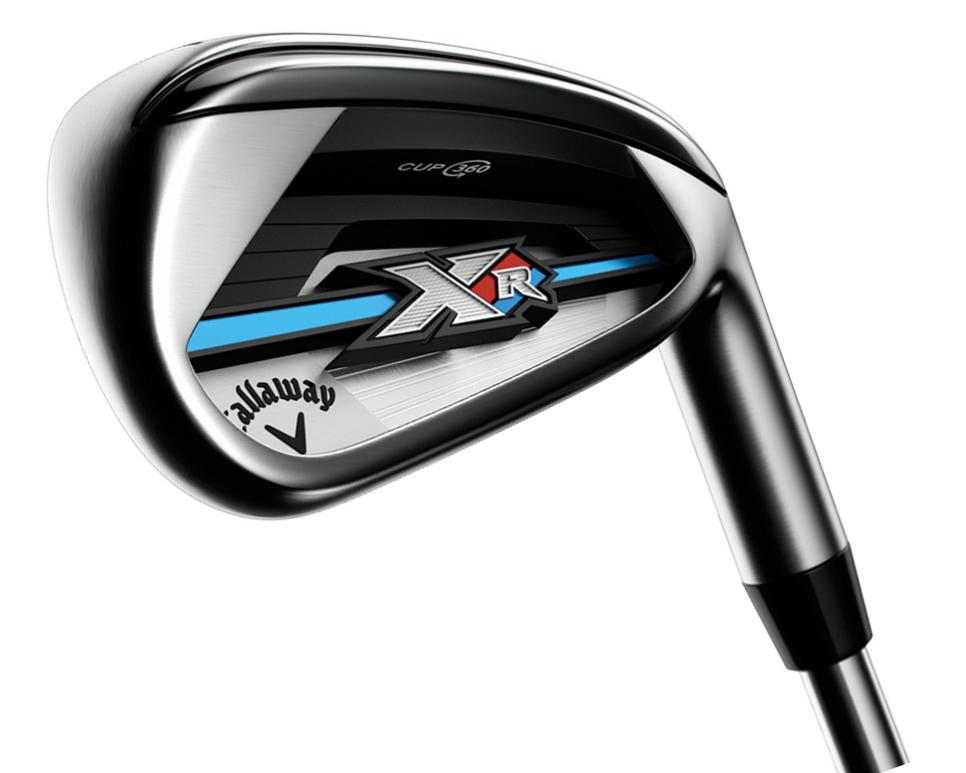News
Callaway: Distance comes from *both* speed and launch with new XR OS

Anybody who’s even got a passing interest in golf equipment knows iron lofts have routinely gotten stronger in recent years. Part of the pursuit of more distance is making the lofts of today’s 6-iron more like the loft of yesterday’s 5-iron. Less loft, less oblique impact, more ballspeed, more distance. Sort of makes sense.
But what if that weren’t the case for every golfer and with every iron within his set? What if distance was a more specific process for each iron?
With the new XR OS irons, a follow up to Callaway’s successful game-improvement XR irons, engineers realized that the real challenge in making irons that give more distance to players who need the most help is combining not only more ball speed but more launch.
Instead of simply strengthening all the lofts and widening all the soles and instituting extreme offset throughout the set, the approach with XR OS irons was “not to get pigeonholed as a one-dimensional super game improvement iron,” said Callaway’s senior vice president of research and development Alan Hocknell. The key elements are Callaway’s proven method of a face that wraps around the topline and crown, called a cup face and selectively higher lofts within the set.
“It goes back to the idea of getting the ball up in the air easily,” Hocknell said. “It’s actually an ultimate take on creating distance using a cup face. The goal was to create the same sort of distance as XR but through a higher ball flight.”
Compared to the XR irons, the XR OS irons add loft in the long and mid irons to varying degrees. The 4- and 7-irons have 1.5 degrees more loft, and the 5- and 6-iron have 2 degrees more loft. The remaining irons are similar in loft to the XR. Meanwhile, there are slightly longer shaft lengths through the 8-iron.
“If you ask me to sum up the premise of the XR OS irons, I would say distance revisited,” says Callaway’s director of iron design Scott Manwaring, who also noted that the company learned through the Big Bertha irons that players were less sensitive to a slight length increase. “We can’t just give these players more loft, so it became a project to step back and say how much loft can we add and still maximize distance?”
The effect of the lofts is enhanced by the push for ballspeed through the company's cupface structure that gets as thin as .050 inches. The wide sole—25-30 percent wider than on the XR irons—provides forgiveness for steep swings going through the turf and shots hit lower on the face.
The XR OS line also includes a completely refocused women’s version that’s 10-20 grams lighter than the men’s version with additional loft.

Callaway added a similarly forgiveness-focused XR OS hybrid to its line of XR hybrids, as well. The larger head and face is designed to provide higher launch, again keyed by the company’s proven cupface construction. Like in the previous hybrids, the internal weighting features a wave-like structure that both lowers the center of gravity while allowing more face flex for shots hit lower on the face. The XR OS also features a draw bias and includes five lofts that range from 19 to 31 degrees.
The XR OS irons will retail for $800 in steel, $900 in graphite, while the hybrids will be $220. A combination iron and hybrid set will be $900 in a steel-graphite configuration and $1,000 in all graphite. They are set to be in stores January 22.